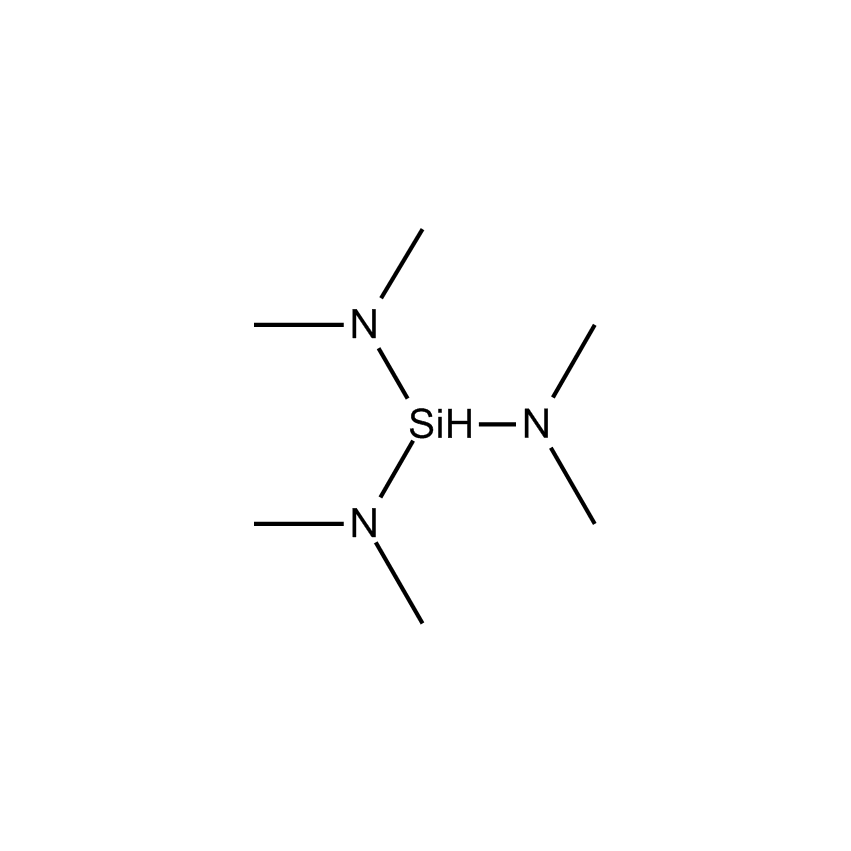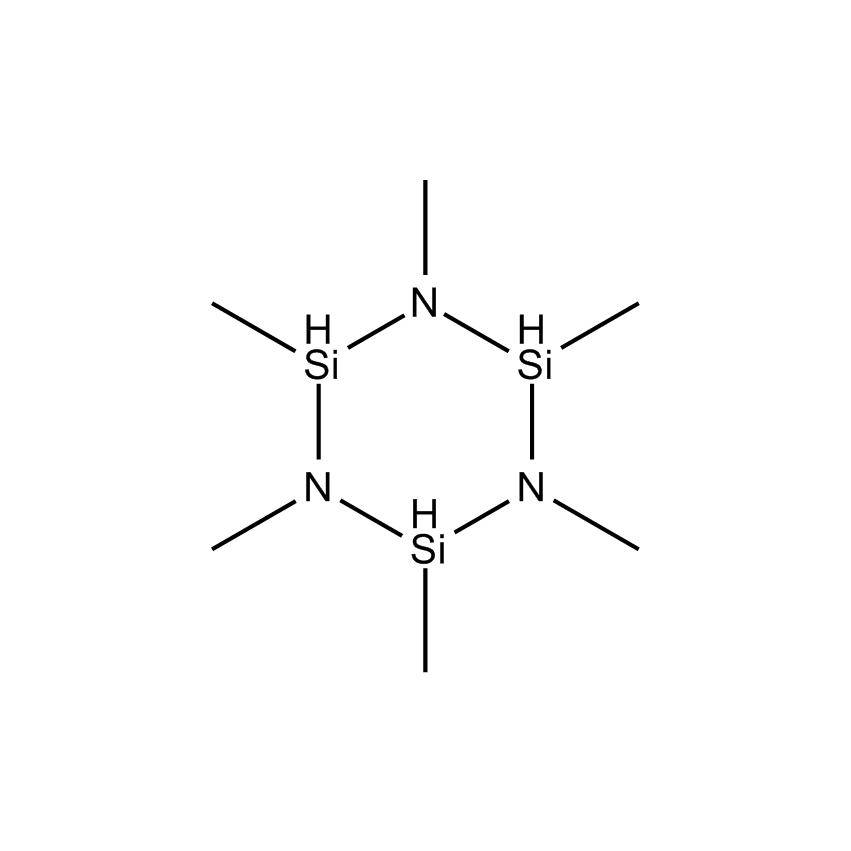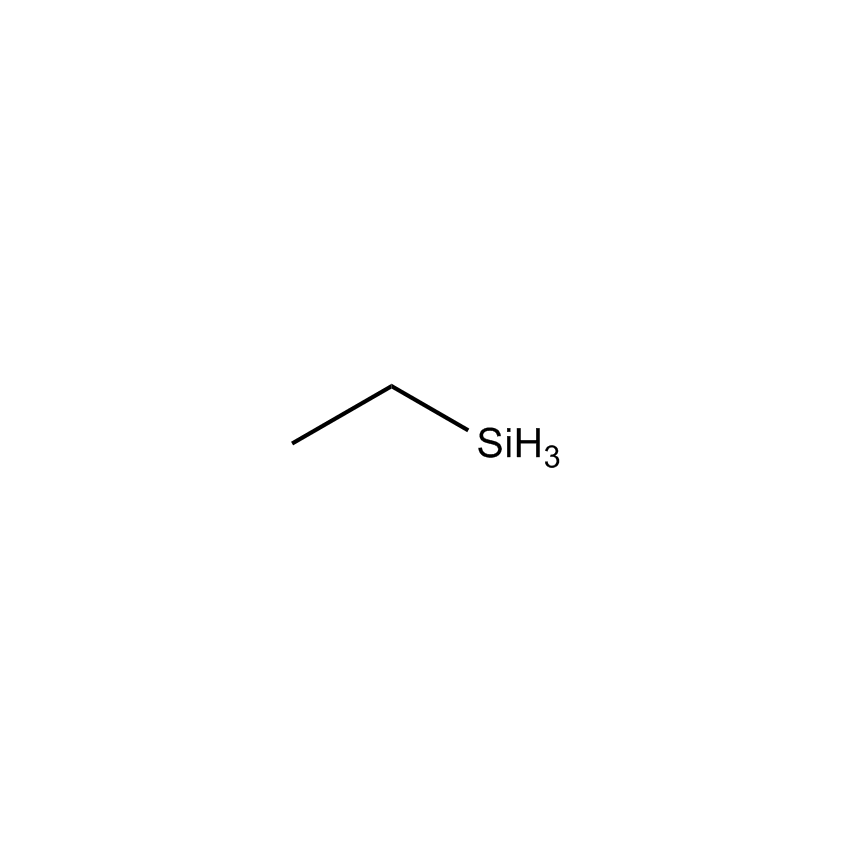Additional Properties
- Einecs Number 239-165-0
- Synonyms 3DMAS
- HMIS 4-3-2-X
- Molecular Formula C6H19N3Si
- Molecular Weight (g/mol) 161.32
- Purity (%) 97%
- TSCA Yes
- Boiling Point (˚C/mmHg) 145-148
- Density (g/mL) 0.838
- Flash Point (˚C) 25 °C
- Melting Point (˚C) -90°
- Refractive Index @ 20˚C 1.4247
Application
Hydrosilylates olefins in presence of Rh2Cl2(CO)41; reacts with ammonia to form silicon nitride prepolymers.1
Employed in low pressure CVD of silicon nitride.2
Reference
1. Review: Kanner, B. et al. In Silicon Chemistry; Corey, J. et al. Ed.; Wiley, 1988; p.123.
2. Levy, R. et al. J. Mater. Res. 1996, 11, 1483.
Safety
ALD Material
Atomic layer deposition (ALD) is a chemically self-limiting deposition technique that is based on the sequential use of a gaseous chemical process. A thin film (as fine as -0.1 Å per cycle) results from repeating the deposition sequence as many times as needed to reach a certain thickness. The major characteristic of the films is the resulting conformality and the controlled deposition manner. Precursor selection is key in ALD processes, namely finding molecules which will have enough reactivity to produce the desired films yet are stable enough to be handled and safely delivered to the reaction chamber.
Tris(dimethylamino)silane; Tris(dimethylamido)silylhydride; N,N,N',N',N'',N''-Hexamethylsilanetriamine
AIR TRANSPORT FORBIDDEN
Silicon Chemistry, Applied Technology
This article provides an overview of the state-of-the-art chemistry and processing technologies for silicon nitride and silicon nitride- rich films, i.e., silicon nitride with C inclusion, both in hydrogenated (SiNx:H and SiNx:H(C)) and non-hydrogenated (SiNx and SiNx(C)) forms. The emphasis is on emerging trends and innovations in these SiNx material system technologies, with focus on Si and N source chemistries and thin film growth processes, including their primary effects on resulting film properties. It also illustrates that SiNx and its SiNx(C) derivative are the focus of an ever-growing research and manufacturing interest and that their potential usages are expanding into new technological areas.



